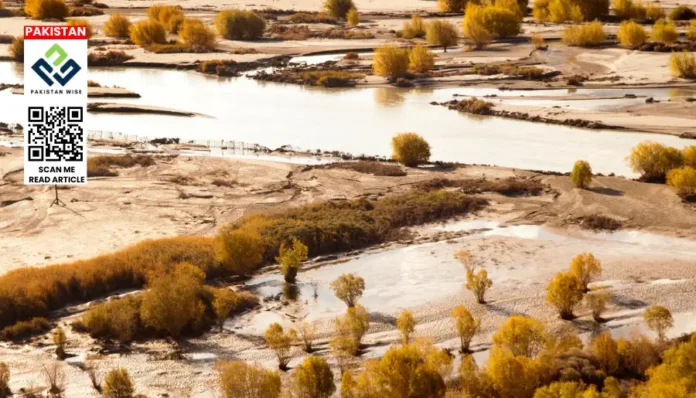The Indus Waters Treaty: A Comprehensive Overview
The Indus Waters Treaty (IWT) is a landmark water-sharing agreement between India and Pakistan, brokered by the World Bank and signed on September 19, 1960. It governs the use of the Indus River system’s six rivers, which are critical for agriculture, hydropower, and livelihoods in both nations. Despite enduring multiple wars and political tensions, the treaty has been hailed as one of the most successful international water-sharing mechanisms. However, recent developments, including India’s temporary suspension of the treaty following the 2025 Baisaran Valley Terrorist Attack, have brought its future into question.
Historical Context and Objectives
The roots of the IWT trace back to the 1947 partition of British India, which left major rivers like the Indus and its tributaries straddling new international borders. Disputes arose immediately, with India’s 1948 decision to halt water flow to Pakistani canals escalating tensions. By the 1950s, the World Bank intervened, proposing a framework to equitably allocate the Indus system’s waters. After nine years of negotiations, the treaty was finalized, with then-Indian Prime Minister Jawaharlal Nehru and Pakistani President Ayub Khan signing the agreement in Karachi.
The treaty’s primary goal was to mitigate water-related conflicts by clearly delineating rights over the six rivers:
- Eastern Rivers (allocated to India): Ravi, Beas, Sutlej
- Western Rivers (allocated to Pakistan): Indus, Chenab, Jhelum
India retained control over the Eastern Rivers, while Pakistan received 80% of the system’s water through the Western Rivers—a concession reflecting Pakistan’s heavy reliance on the Indus for irrigation.
Key Provisions and Mechanisms
1. Water Allocation
The treaty partitions the rivers rather than sharing their flows. India is permitted limited agricultural and non-consumptive uses (e.g., hydropower) on the Western Rivers, provided it does not alter water flow or timing into Pakistan. Conversely, Pakistan holds exclusive rights to the Western Rivers, barring India from constructing large storage projects without approval.
2. Transition Period and Financial Commitments
A 10-year transition phase (1960–1970) allowed Pakistan to develop infrastructure to utilize the Western Rivers. During this period, India continued supplying water from the Eastern Rivers, even during the 1965 Indo-Pakistani War. India also contributed £62 million (or 125 metric tons of gold) to fund Pakistan’s canal projects, paid in annual installments.
3. Dispute Resolution Framework
The treaty established the Permanent Indus Commission (PIC), comprising commissioners from both nations. The PIC facilitates annual meetings, data exchange, and conflict resolution through a three-tiered mechanism:
- Bilateral negotiations via the PIC
- Neutral Expert for technical disagreements
- Court of Arbitration for legal disputes
This framework has resolved numerous conflicts, including disagreements over India’s Baglihar and Kishanganga hydropower projects.
Challenges and Recent Developments
1. Geopolitical Tensions
Despite its success, the treaty has faced strain during military conflicts, including the 1971 war and the 1999 Kargil conflict. However, the 2025 suspension marks the first formal halt to the treaty’s implementation, triggered by India’s response to a terrorist attack.
2. Climate Change and Resource Stress
Rising temperatures and erratic monsoons have reduced river flows, exacerbating water scarcity. Pakistan, which depends on the Indus for 90% of its agriculture, faces acute shortages, while India seeks greater flexibility for hydropower projects.
3. Technical and Legal Disputes
Pakistan has frequently challenged India’s hydroelectric projects, alleging violations of the treaty’s design specifications. For instance, the Kishenganga arbitration (2013) required India to modify dam heights to ensure minimum water flow to Pakistan.
The Treaty’s Legacy and Future Prospects
The IWT’s resilience lies in its pragmatic design, which separates water-sharing from political disputes. However, its effectiveness now hinges on both nations’ willingness to adapt to climate realities and de-escalate tensions. Key considerations include:
- Modernizing Provisions: Updating technical standards to accommodate climate change and technological advancements.
- Enhancing Transparency: Making PIC reports public to build trust.
- Third-Party Mediation: Leveraging the World Bank’s role to address disputes impartially.
Conclusion
The Indus Waters Treaty remains a testament to the power of diplomacy in resolving transboundary water conflicts. Its suspension in 2025 underscores the fragility of even the most robust agreements in the face of geopolitical crises. As both nations grapple with water scarcity and climate change, the treaty’s survival will depend on renewed cooperation and adaptive governance. Without it, the risk of water becoming a weapon in regional conflicts looms large—a scenario the IWT was designed to prevent.

